Rose hips are the often-overlooked superfood with all kinds of benefits, such as helping to lower blood sugar, and are a great source of antioxidants and anthocyanins. Powdered rosehips, seeds and all, ease the inflammation of different types of arthritis. A spoonful of rose hip pulp contains your recommended daily intake of vitamin C.
Like Ovaltine, rosehips are good … and they’re good for you.
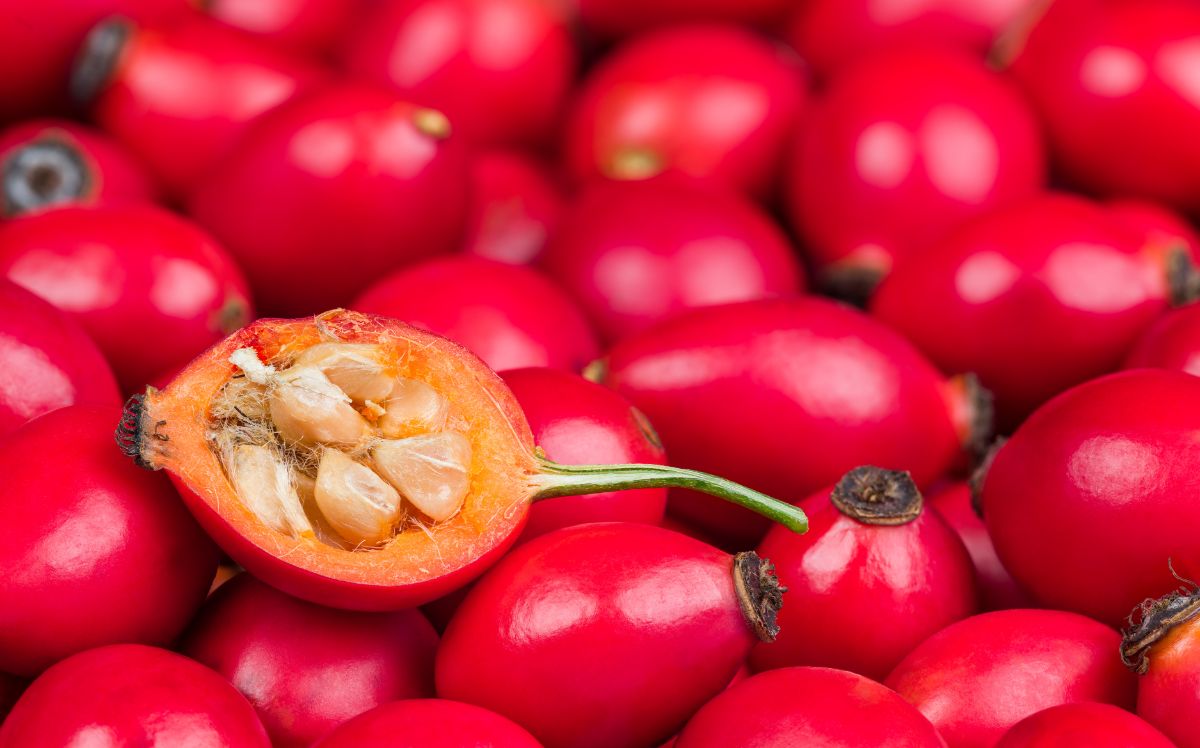
You might live in an area where wild roses abound, so why not take advantage of the bounty? This fall, gather rose hips, dry them, and enjoy their superfoodiness in the form of a tasty cup of tea.
Jump to:
Why Should You Dry Rose Hips?
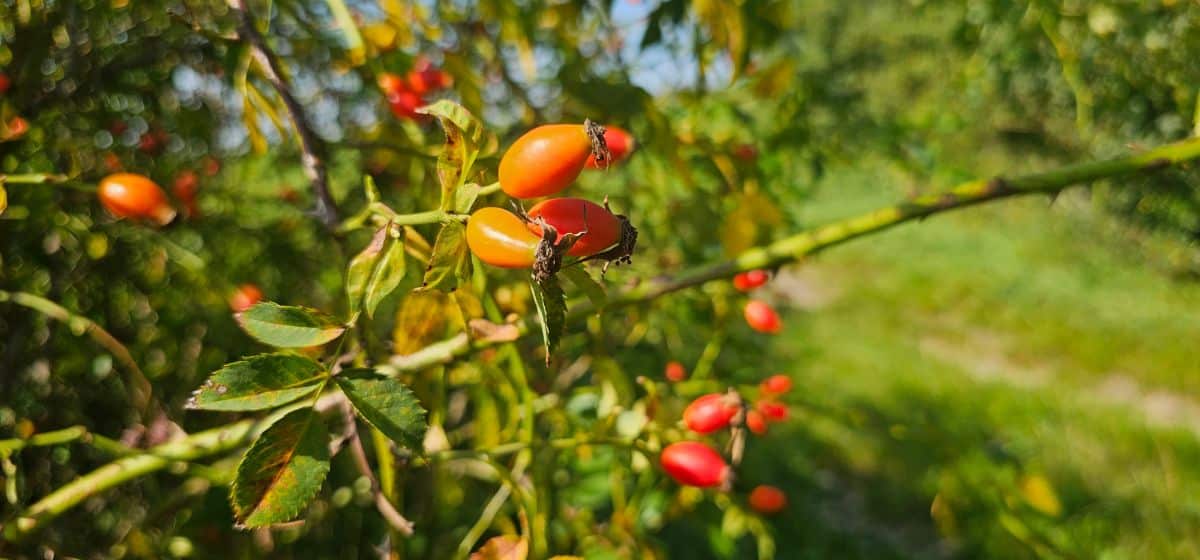
Personally, for me, drying anything is the path of least resistance. I’m a lazy gal, and if all I have to do is chop something up and throw it on the dehydrator, I’m going to do it.
Drying rose hips is also a good way to save that fall sweetness for winter.
Foraging for Rose Hips

Some people recommend waiting until the first frost to pick rose hips because being frozen brings out the sugar in the hips. However, an easier way is to pick them up whenever they’re ripe and store them in a freezer bag in the freezer for at least a day.
Be sure to collect hips from roses that have not been sprayed with chemicals, whether they be fungicides, insecticides, or any other -icides.
To go a-picking rose hips, wear a long-sleeved shirt, denim jeans, closed-toe shoes, and a hard hat. Okay, leave the hard hat at home.
Definitely wear gloves when foraging for roses – or better yet, rose gauntlets. Any time I try to work with roses without gauntlets, even if I’m very careful, my arms always end up looking like I fought a wildcat.
Choose rose hips that are a deep red, orange, or yellow. Don’t pick green ones; they’re not ripe. <<Read more about foraging for rose hips here.>>
Perhaps you live in an area (say, the Midwest) where wild roses with big hips are about as rare as hen’s teeth. In that case, you might have to learn how to grow your own roses. Which isn’t a bad way to spend your time, to be honest.
Preparing the Hips for Drying
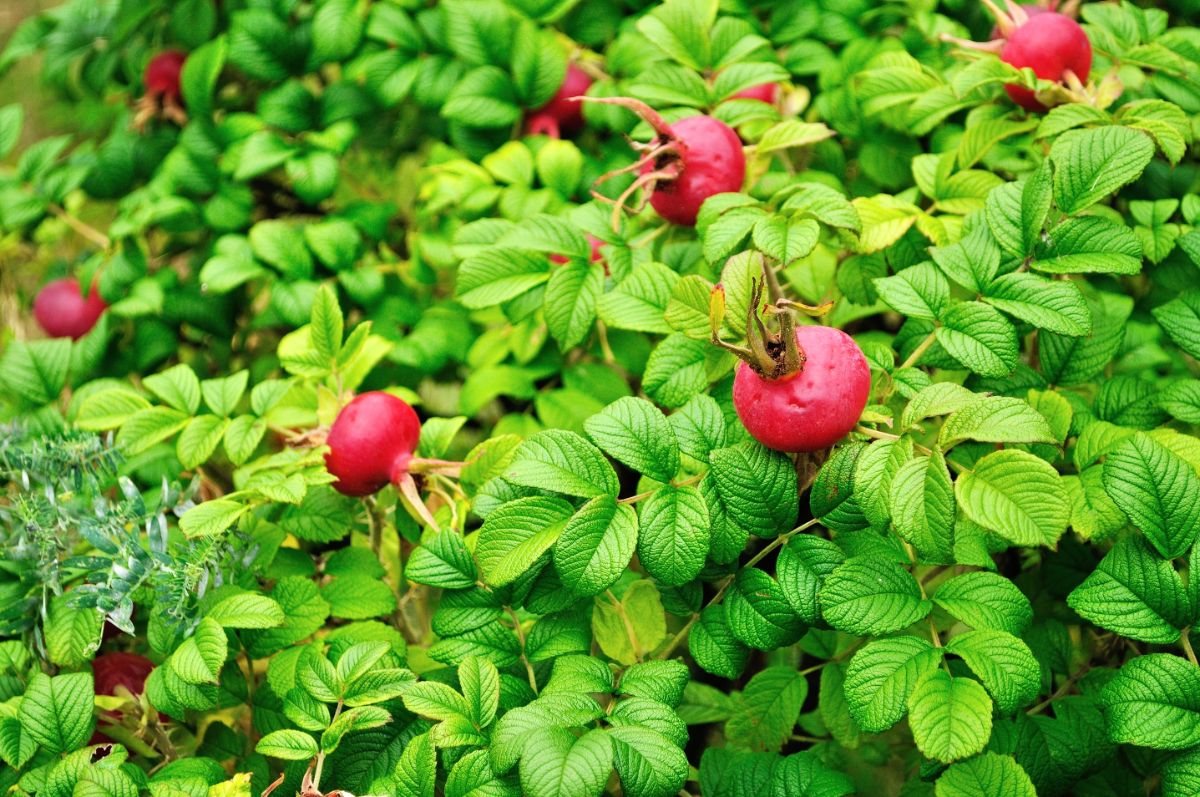
Once you get home with your haul, remove the stem and the bud end, then wash them and lay them on a couple of dish towels to dry.
Some people will cut the hips in half, remove the seeds, and thoroughly clean out all the hairs. This will be time-consuming, so choose a good audiobook to listen to.
Put on surgical gloves to do this work because your hands will become very sticky. Use a small measuring spoon to scoop out the hair and seeds.
Also, the hairs are as itchy and irritating as fiberglass. True story: The hairs from rose hips were once used to make itching powder.
Once you’re done, rinse off the rose hips to get the rest of the hair. Change the water and rinse again. Then let them dry.
Or simply skip all this and dry them whole because there’s another way to clean the hips – keep reading to learn how.
Now on to the Actual Drying!

There are a couple of ways to dry your rose hips. In all these cases, rose hips should be dried until they’re shriveled.
Air-Drying Rose Hips
You can air-dry rose hips by laying them out on a clean surface. This will take a little while, but the process will go a little faster if you spread them out on a mesh screen. Run a fan on them to keep the air moving, and turn them often. It will take about a week or so to dry them.
With rose hips, you can get nostalgic for Christmases past while drying them. With a needle, string them like beads onto a very long thread to make a rosehip chain. Then hang them in a cool, dark, and dry place – though you could certainly hang them on the Christmas tree if you’re a little short on garlands.
Drying Hips in the Oven and Dehydrator
Spread the rose hips evenly on a baking sheet and dehydrate them at low heat for three or four hours until they feel leathery. Keep the oven door cracked open to let moisture escape. You can even dry them in the toaster oven (set it at 200 degrees or less). Check them regularly so they don’t scorch.
In a dehydrator, spread them evenly on the trays and run the dehydrator. Check on them every hour or so until they’re completely dried and feel leathery.
Now, Utterly Crush Them
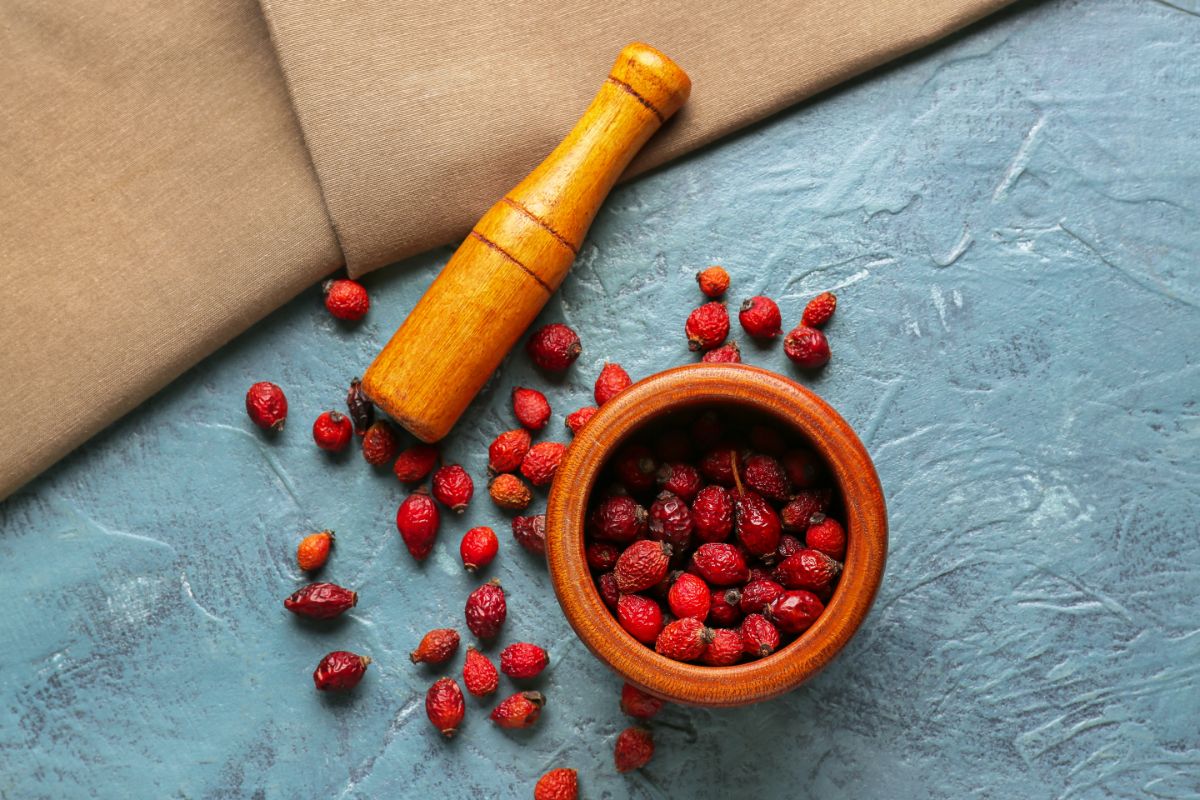
Next, you will smash up the whole rose hips to get the itchy hairs out. (Leave the seeds in if you’re just making tea with these.)
One way is to pulse them through a food processor until they’re in small chunks. The other way is to crush them with a mortar and pestle. Either way, you’ll likely have to do the rose hips in small batches.
Put the broken hips into a large sieve and shake them to get the itchy little hairs out. Stir the rose hips and keep repeating until no more hairs sprinkle out. The itchy hairs have to go because they will irritate your throat to no end.
Winnowing also removes the hair. Put the ground-up rose hips in a large, wide container like a popcorn bowl or large colander and take them outside when the wind is moving. Toss them gently until you get the hang of it – because you don’t want to have picked and prepared all those hips only to see them go flying out with a bad toss.
When done correctly, winnowing allows the wind to carry away the itchy hairs, leaving only rose hips and seeds. Wear a mask and glasses just in case the hairs get blown back into your face.
Storing Rose Hips
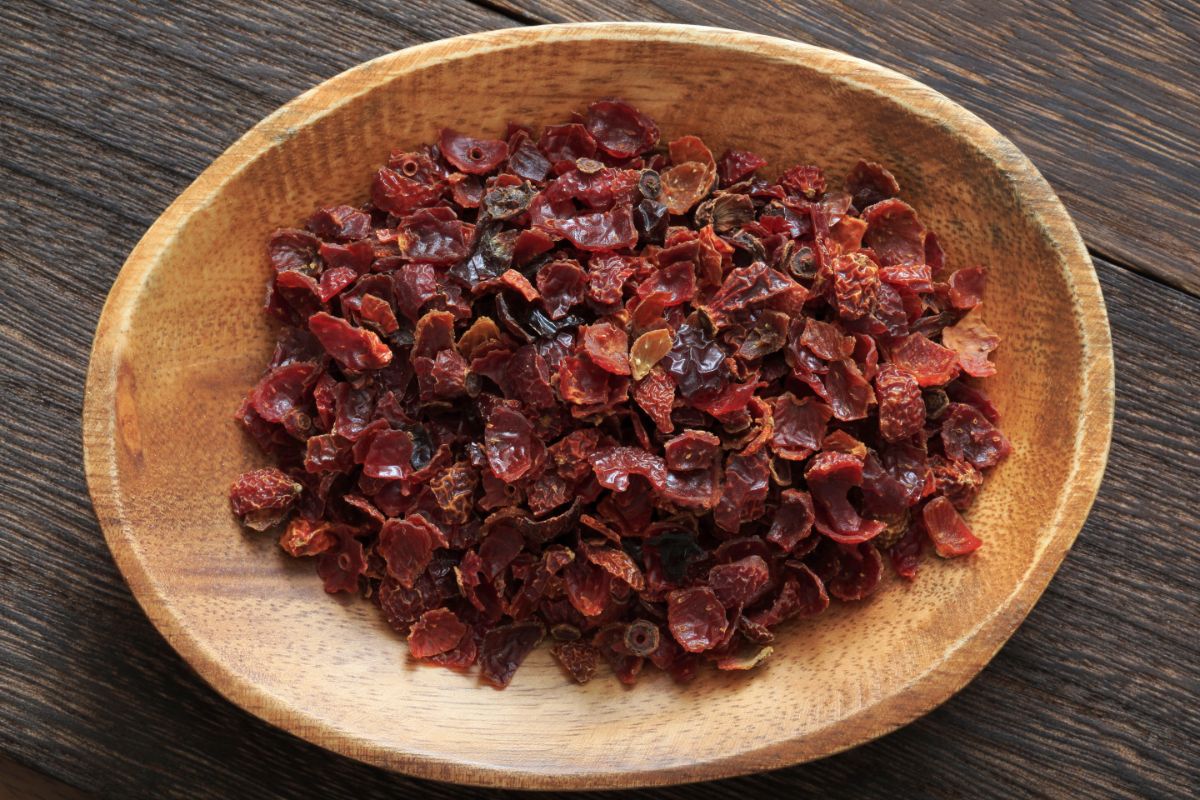
Store dried hips in an air-tight container in a cool, dark place, marked with the date they were stored. They’ll keep for about a year or longer if you store them well.
It’s also okay to freeze them because they’ll keep even longer.
How to Make Rose Hip Tea

Dried rose hips make a tasty herbal tea with a hint of sweetness.
If you’re using whole hips, add four to eight dried (or fresh) hips in a mug, and let them steep for ten or 15 minutes. Remove the rose hips and sip daintily.
If using minced rosehip chunks, use about a tablespoon of them.
Experiment with the amount of hips you use and the steeping time until you find the happiest medium. Some people like a very strong tea, while others like a lighter taste. At any rate, a cup of good rosehip tea makes everything better.









Sylvia
Very informative. Would love the ability to use these wonderful hips.
Rosefiend Cordell
Me too! There actually used to be a lot of wild roses around here that had hips, but when I went out looking for them while writing this article, I could only find weak stands of multiflora roses in the woods. I'm thinking rose rosette disease killed the majority of them, which is very sad.
So I'm growing my own roses for hips (and fragrance!). I have the one rugosa rose and will be ordering more this winter. Make my own rose garden at last. How crazy is that!